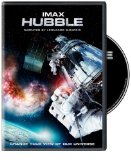“May, 2009 – Seven brave astronauts are about to launch on the most challenging and risky missions ever flown in space. This is the last chance to save the Hubble Telescope.”
You have to really go back to April of 1990 to get to the start of the story. That’s when the shuttle Discovery launched from Cape Kennedy with the Hubble Telescope in its cargo bay waiting to bring the ends of the universe to our waiting eyes. I was there that day among the crowd of hopefuls as the shuttle ignited its thrusters and pierced the sky for space. I bought a commemorative coin from a roving vendor and drove the two hours home without even listening to any music. Watching a shuttle launch is an almost religious experience that, unfortunately, few will ever know. I’ve been lucky enough to witness seven.
Discovery safely deployed her precious cargo, but the world’s expectations were about to be dealt a serious blow. The telescope’s mirror was warped, and the blame game had started. We were getting pictures, certainly, but nothing like what we hoped for. Nothing here was any better than we had already witnessed through our earthbound telescopes. It would take 3 years for NASA to come up with a plan and successfully execute it. And when they did… Well, Dave Bowman said it best at the end of 2001: A Space Odyssey: “It’s full of stars”.
Over the years Hubble has taken us closer and closer to the beginning of time itself. This IMAX feature does its best to cover the history of the telescope as it covers a 2009 mission to do some upgrades and maintenance on the device. The astronauts took the IMAX cameras to space and chronicled the efforts. There were a few hairy moments, but nothing quite so dramatic as the opening narration suggests. In fact, it’s the narration where this piece suffers most. Leonardo Dicaprio is quite dull here. He has no emotion in his voice, and it drones on and on. The piece is saved mostly by the stunning images taken from the telescope itself. The original feature was 3D, and there are some spectacular computer enhanced images that allow you to “fly” through some of the phenomena the telescope has captured.
Video
The IMAX feature is presented in an altered aspect ratio of 1.78:1. This really needs to be in high definition to truly appreciate. The shuttle footage is good documentary quality, and you can certainly see the potential of the Hubble images themselves. But this presentation is neither in 3D or HD, so it lacks any stand-out image presentation. It’s good, for a standard DVD, but doesn’t do the source material justice.
Audio
The Dolby Digital 5.1 track is really dialog and serves that purpose just fine.
Special Features
Inside IMAX Hubble 3D: (8:17) Astronauts and film production crew talk about what an awesome experience they had..
Final Thoughts:
This is the kind of feature that makes me angry. I’ve talked about it before. There is so much out there to explore and discover. Hubble has brought these things so close I almost feel like I can touch them. But the reality is they are too far away and we seem to have lost our ambition for space. Space really is the final frontier. “It’s time to go out there and do it.”




